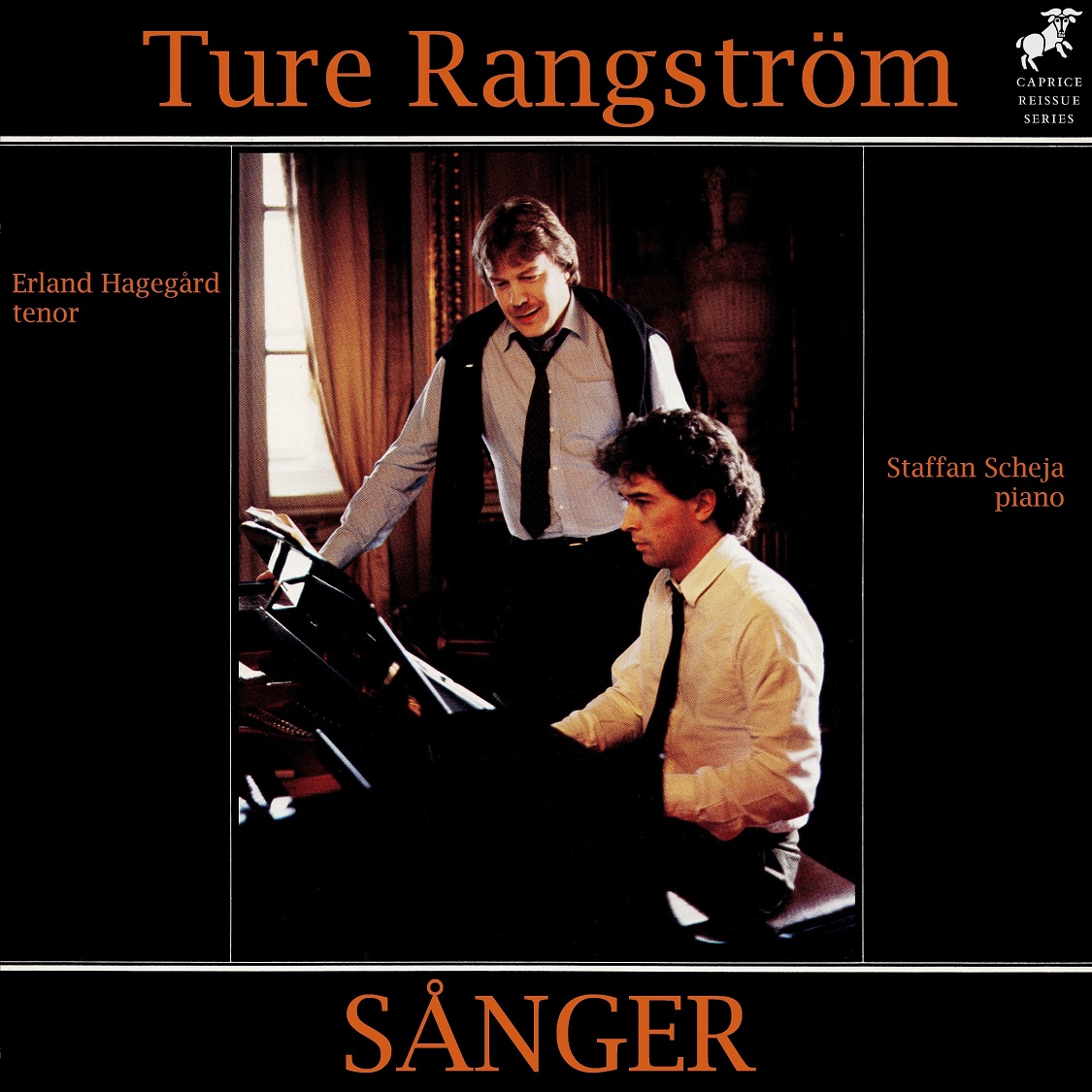Ture Rangström: Sånger
Erland Hagegård, Staffan Scheja
Two internationally well-known artists, the tenor Erland Hagegård and the pianist Staffan Scheja, interpret 18 songs by Ture Rangström – nine of these were issued on record for the first time. These works are central in Rangström’s production, distinctive in the Swedish repertoire, and amply varied in their ever new illustrations of the texts.
Ture Rangström’s (1884-1947) comprehension of the solo song/romance somewhat equalled that of most other “romantic” song composers, in that it creates an artistically meaningful connection between poetry and music. Like many Swedish composers before him in the 19th century Rangström also started out by composing songs. And yet, his production of art songs is special in many ways. There were several strong driving forces behind this. Firstly, poetry was a decisive source of inspiration.
Perhaps even my interest in music was born of poetry, for it was precisely the word, the fiery word of the poet, that set in motion my implacable desire to compose… I wanted to become a musical poet, not only a romantic singer or troubadour, in relation to my poets. (1940)
Secondly, during the years 1905-07 Rangström studied in Berlin and Munich, composition with Hans Pfitzner and singing with Julius Hey. Most important were his studies with Hey, who during the 1880’s had been among those who had formulated the principles for a musical-dramatic singing practise in Richard Wagner‘s operas. One of Hey’s fundamental ideas about the art of song was that the song is a vocally and musically sounding fixation and magnification of the linguistic accents. Back in Sweden, Rangström would propagate closely to Hey’s ideas to promote a linguistically based singing practise.
These “unsingable” languages, how rich in opportunities for spiritual expression are they not – and to what degree do they not need this very psychological characterization… A Nordic poem must be spiritually inspired to sound – and even then, preferably, not like an empty bell. (1908)
The voice’s means of expression as concertante, theatrical instrument in Rangströmg’s music always aims in principle at “expressiveness of the soul” and “psychical characterization”, with a great range and wealth of contrast in the expression. For the singer – and the pianist – this unity is both challenging and rewarding to work with. It becomes a matter of seeking the truth, a striving to search into onself and others, and with poetry and music as media formulate knowledge of people and life.
The poem liberated for him fettered forces in tone and composer, and through this strange process, compounded of experience and fantasy, the new art work is born: the song.
That was how Rangström experienced it. His own description of his procedures as a reader of poetry, singer, and composer is instructive. His perspectives can hardly be explained more clearly.
A poem has very rarely enticed me by purely musical-associative elecments; on the other hand, the speech melody of a poem is extraordinarily decisive for a composer who endeavours to go further than the primitively pleasant charm of the cantilena. This speech melody should be followed in all parts, its, so to speak, inner and outer rhythm, its psychical and tonal balance, its rising and falling, and its precise rendering of the poem’s meaning. (1945)
This recording was made in the Royal Swedish Academy of Music’s great hall (now known as Musikaliska) in Stockholm on June 1, 3 & 5, 1981, April 13 & 15, 1982.
Producer and technician: Ulf Rosenberg
Cover photo: Bengt Wanselius
Graphics: Inga Beckeman, Pontus Reuterswärd
-
1.Ur Fem dikter av Bo Bergman (1917): Vingar i natten Music: Ture Rangström
-
2.Ur Fem dikter av Bo Bergman (1917): Melodi Music: Ture Rangström
-
3.Tre dikter av Verner von Heidenstam (1924): I. Vi människor Music: Ture Rangström
-
4.Tre dikter av Verner von Heidenstam (1924): II. Paradisets timma Music: Ture Rangström
-
5.Tre dikter av Verner von Heidenstam (1924): III. Stormar Music: Ture Rangström
-
6.Ur Den mörka blomman (1924): Vinden och trädet Music: Ture Rangström
-
7.Ur Idyll (1917): Behagen Music: Ture Rangström
-
8.Ur Sex visor (1915): Natt Music: Ture Rangström
-
9.Ur Legender - Ballader - Romanser (1923): En båt med blommor Music: Ture Rangström
-
10.Syrsorna (1936) Music: Ture Rangström
-
11.Ur Fem ballader till dikter av Bo Bergman (1924): Pan Music: Ture Rangström
-
12.Till smärtan (1924): I. Vildgässen flytta Music: Ture Rangström
-
13.Till smärtan (1924): II. Den gamle Music: Ture Rangström
-
14.Till smärtan (1924): III. Till smärtan Music: Ture Rangström
-
15.Ur Legender - Ballader - Romanser (1922): Junkerns serenad Music: Ture Rangström
-
16.Ur Sex visor (1915): En gammal dansrytm Music: Ture Rangström
-
17.Serenad (1919) Music: Ture Rangström
-
18.Trots allt (1935): Tristans död Music: Ture Rangström
-
- Total playtime


